Home » News » All the details, all the reactions: Federal government’s $1.2bn tourism support package explained

All the details, all the reactions: Federal government’s $1.2bn tourism support package explained

After much anticipation, the federal government has finally released the details of its new $1.2 billion support package for Australia’s tourism industry.
Prime Minister Scott Morrison said that while Australia’s economy had recovered 85 per cent of its fall from COVID-19, the next step in the government’s National Economic Recovery Plan would target the businesses, workers and regions still doing it tough.
Morrison said the package’s mix of half-price airline tickets, cheap loans for businesses and direct support to keep planes in the air, and airline workers in their jobs, would be a bridge to a more normal way of life for Aussies.
“This is our ticket to recovery – 800,000 half-price airfares to get Australians travelling and supporting tourism operators, businesses, travel agents and airlines who continue to do it tough through COVID-19, while our international borders remain closed,” he said.
“This package will take more tourists to our hotels and cafes, taking tours and exploring our backyard.
“That means more jobs and investment for the tourism and aviation sectors, as Australia heads towards winning our fight against COVID-19 and the restrictions that have hurt so many businesses.
“Our tourism businesses don’t want to rely on government support forever. They want their tourists back.
“This package, combined with our vaccine roll-out which is gathering pace, is part of our National Economic Recovery Plan and the bridge that will help get them back to normal trading.”
Deputy Prime Minister and Minister for Infrastructure, Transport and Regional Development Michael McCormack said the measures would work hand-in-hand to boost interstate tourism and aviation in key regions significantly impacted by the loss of tourists.
“The new Tourism Aviation Network Support (TANS) Program will give Australians clear incentives to travel to key domestic tourism areas,” the Deputy Prime Minister said.
“Discounts will be offered on tens of thousands of fares per week across an initial 13 key tourism regions.
“We’re working with airlines to increase the number of flights to these tourism areas, giving travellers the flexibility needed when organising dream holidays to destinations such as Tropical North Queensland and Kangaroo Island.
“In a big win for local communities, especially in regional Australia, we will continue to financially support flights which are so key to health services, employment opportunities and social activities.
“We’re also backing the workforces of our international airlines and the teams and infrastructure they need so that when tourism takes off again and our borders reopen, our airlines are ready to go.”
The half-price ticket program will initially operate to 13 key regions: the Gold Coast, Cairns, the Whitsundays and Mackay region (Proserpine and Hamilton Island), the Sunshine Coast, Lasseter and Alice Springs, Launceston, Devonport and Burnie, Broome, Avalon, Merimbula, and Kangaroo Island.
Flights, routes and the total number of tickets will be driven by demand and are subject to final discussions with the airlines. The discounts will be off the average fare and will be available on airline websites from 1 April.
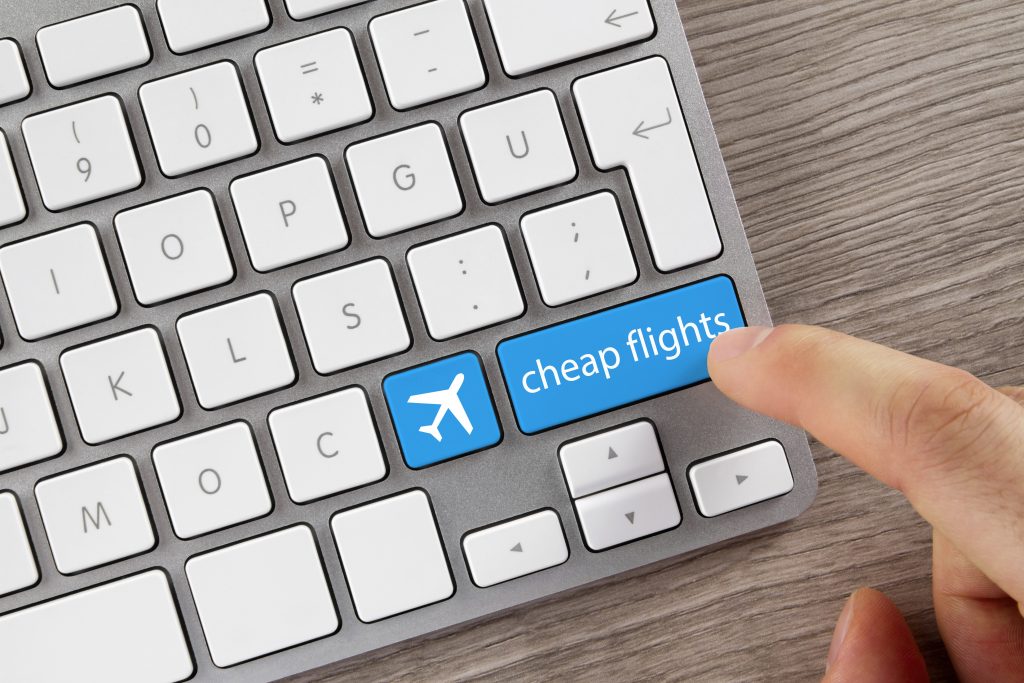
Image source: iStock/anilakkus
Other new measures in the support package include new international aviation support to help Australia’s international passenger airlines maintain more than 8,000 core international aviation jobs.
Furthermore, there is support for regular passenger airports to meet their domestic security screening costs, and a new Aviation Services Assistance Support Program to help ground-handling companies meet the costs of mandatory training, certification and accreditation to ensure they maintain their workforces until the market expands again.
The government will also reinstate domestic aviation security screening cost rebates for more than 50 regular passenger airports.
The government’s ‘SME Loan Guarantee Scheme’ will be expanded and extended as part of its commitment to support up to $40 billion in lending to small- and medium-sized enterprises.
Under the existing scheme, more than 35,000 loans worth more than $3 billion have already been provided.
The new-look ‘SME Recovery Loan Scheme’ will be targeted and tailored to support those businesses that have been relying on JobKeeper during the March quarter.
It will benefit from an increased government guarantee, increasing from the current 50/50 split between the government and the banks to an 80/20 split.
The expanded scheme will also increase the size of eligible loans, increasing from $1 million under the current scheme to $5 million.
Businesses with a higher turnover will also benefit under the expanded scheme, with the maximum eligible turnover increased from $50 million to $250 million. Maximum loan terms under the expanded scheme will also be increased from five to 10 years.
The expanded scheme will also allow lenders to offer borrowers a repayment holiday of up to 24 months. The scheme will also be able to be used by eligible businesses to refinance their existing loans.
More than 350,000 current JobKeeper recipients are expected to be eligible under the expanded scheme. Loans will be available from 1 April 2021 and must be approved prior to 31 December 2021.
Treasurer Josh Frydenberg said this latest package of measures was all part of the government’s National Economic Recovery Plan.
“We know there are sectors and regions across the country that are continuing to do it tough, which is why we will continue to support the economy with proportionate, timely, scaleable and targeted assistance,” the Treasurer said.
“Our support for the aviation sector will not just keep planes in the air, but will also provide a boost to domestic tourism while our international borders remain closed.
“This SME Recovery Scheme is part of the next step in our plan to help small businesses stand on their own two feet as the economy recovers from COVID-19.
“The expansion and extension of the loans will back businesses that back themselves, and will help businesses who continue to do it tough build a bridge to the other side of the crisis and keep their staff employed.”
Minister for Trade, Tourism and Investment Dan Tehan said the government was also extending temporary, targeted measures for parts of the tourism sector impacted most from border closures.
“The thing our tourism operators want more than anything is tourists, so we need Australians to do their patriotic duty and book a holiday this year, because every dollar spent on an Australian holiday is a dollar that supports a local job and a local business,” Tehan said.
“Our government’s support package will help get more Australians into those tourist areas most impacted by border lockdowns, and we need states and territories to do their part by agreeing to a nationally consistent approach to using border closures and lockdowns as a last resort on medical advice.”
The government has also extended the Domestic Aviation Network Support and Regional Aviation Network Support programs to 30 September 2021, as well as the 50 per cent waiver of domestic air services charges for regular public transport and aeromedical flights, and the International Freight Assistance Mechanism.
The government’s $50 million Business Events Grants Program will also be extended by three months to support Australian businesses to hold multi-day business events, covering up to 50 per cent of costs incurred in participating business events during the 2021 calendar year.
The $94.6 million support program for zoos, aquariums and wildlife parks will be extended by six months to maintain their animal populations where their tourism revenue has been affected by travel and social distancing restrictions.
The COVID-19 Consumer Travel Support Program will also be extended for three months beyond 13 March, with the Tourism Minister confirming that an additional $130 million will be added to the dedicated relief fund for travel agents, tour operators and wholesalers.
Support package draws mixed reactions
Australian Federation of Travel Agents CEO Darren Rudd said the industry body was grateful that the government “has heard and acted on our increasingly desperate pleas that ongoing support is critical”.
“We look forward to continuing to work closely with the Morrison-McCormack government on the details of implementation so that this historic support goes to those travel businesses who most need help.
“The ongoing refinement of the COVID-19 support package to ensure equitable distribution of funds across the breadth of our sector is continuing as a priority, and AFTA will keep on working daily with Austrade to make sure support gets to where it is so desperately needed.
“This is our major priority.”
Airlines for Australia & New Zealand chairman Professor Graeme Samuel said the support package offered a vital lifeline to stem the loss of critical skills and experience from the sector’s workforce.
“More than 34,000 airline employees, including pilots, crew and engineers have been impacted by stand-downs or redundancies over the past year, where the COVID-19 pandemic saw international travel plummet by 98 per cent, and domestic by 86 per cent,” he said.
“The inconsistent state border restrictions and closures have left Australia’s domestic market below half its pre-pandemic levels, lagging behind the rest of the world in its recovery.
“In order to be ready to stand workers back up when demand picks up and international travel eventually resumes, airlines need this support for retraining and recertification requirements.”
However, aviation unions appealing for the government to reverse its decision not to extend JobKeeper beyond 28 March and introduce ‘Aviation Keeper’ for all aviation workers with strict conditions capping executive salaries, banning bonuses and dividends and banning outsourcing.
The Transport Workers’ Union’s national secretary, Michael Kaine, said JobKeeper had been a vital lifeline in helping workers pay their bills and support their families.
“The federal government is ripping away a vital support to the aviation industry at a critical moment,” he said.
“Domestic aviation is poised to make a comeback, but it is not there yet. The Australian taxpayer has effectively paid the wages of thousands of aviation workers for almost a year.
“Stopping that support at the final hurdle makes no sense and amounts to a scandalous waste of hundreds of millions of dollars spent to date.”
Qantas Group CEO Alan Joyce said the stimulus package will bring the company’s domestic crews back to work faster and help them ramp up their hours closer to pre-crisis levels.
“We have around 7,500 people in our international business who have already been out of work for a year and will unfortunately stay grounded until at least the end of October,” he said.
“The targeted support from the federal government is about helping people stay connected to aviation despite the extended period of time they still face on the ground. It helps preserve the skills and experience we’re going to need when long-haul flying restarts.
“In a country like Australia, that capability has taken years to build and is absolutely crucial for the nation’s future.”
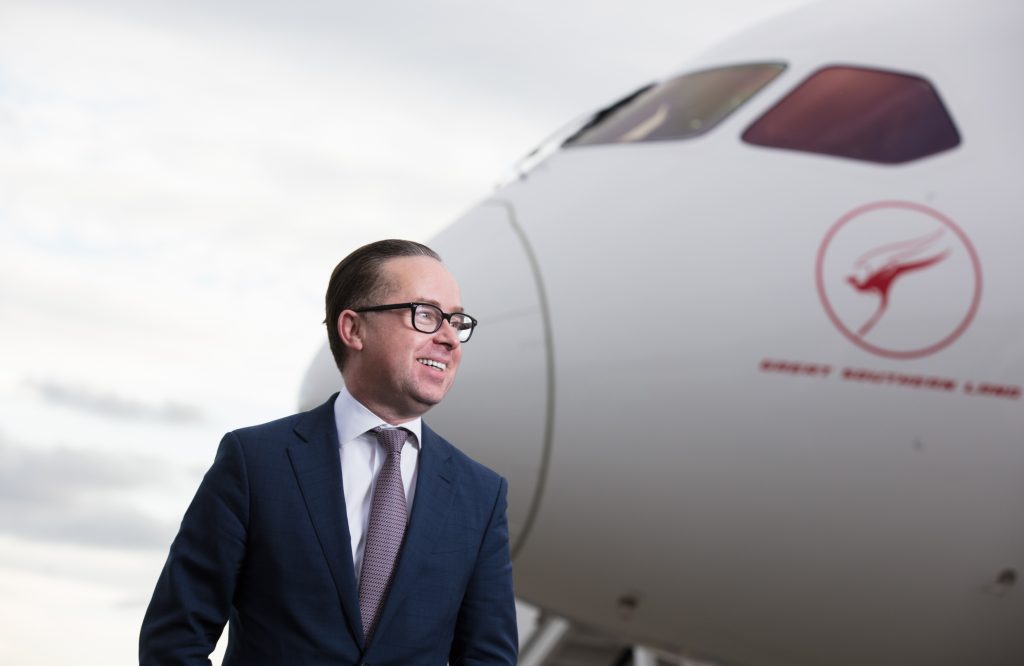
Qantas Group CEO Alan Joyce
Joyce said the targeted support will go directly to Qantas and Jetstar employees to help them meet their cost of living while they wait for international flying to return.
“It’s not a subsidy for Qantas,” he said.
Meanwhile, the Accommodation Association has vented its frustration over the lack of government support for hotels in capital cities.
“For Sydney and Melbourne, where 80 per cent of the market is from international and corporate markets which are still not operating due to government restrictions, the lack of support in this package will result in a loss of jobs and slow our recovery once borders are open,” Accommodation Association CEO Dean Long said.
“Our hotels in these two major international gateways currently have a forward booking rate of less than 10 per cent for the next 90 days and desperately need immediate support.”
The Australian Hotels Association (AHA) and Tourism Accommodation Australia have welcomed the government’s targeted regional tourism plan, but have called for a “fairer deal” for struggling capitals and more regional areas.
“While it is great to see government assistance for battling tourism areas like far North Queensland and the entire aviation industry, we need to ensure all businesses still affected by the pandemic are looked after, especially with a ‘job cliff’ coming,” AHA chief executive Stephen Ferguson said.
“Hospitality businesses were the first to close a year ago. We are proud of the role we have played in keeping the community safe, but we need to remember most hospitality and accommodation businesses are still heavily impacted by a wide range of restrictions such as international border closures.
“With JobKeeper winding up on 28 March, we are still very concerned at redundancies in our businesses which have been left out of this new plan.”
Simon Westaway, executive director of the Australian Tourism Industry Council, expressed disappointment that direct, targeted and short-term assistance for tourism enterprises had no part in the multi-pronged package.
“We are on the cusp of a national vaccine rollout bringing future confidence to domestic travel, yet the package doesn’t address at-risk tourism jobs in our cities and regions,” he said.
“Fundamental to our industry’s sustainability is the state of tourism businesses and reliant jobs in our capital cities, where interstate and international visitors and major events have evaporated.
“This package isn’t going to provide the benefit, nor directly tackle the dire predicament facing tourism enterprises and our visitor economy, which is closely aligned to capital city gateways.”
Featured image source: iStock/alfexe
Email the Travel Weekly team at [email protected]
Latest news, revamped wailoaloa beach hotel opens as crowne plaza fiji nadi bay resort & spa.
Crowne Plaza Fiji Nadi Bay Resort & Spa is open and ready for bookings after the first phase of a multi-million-dollar transformation. Part of IHG Hotels & Resorts’ premium collection, the transformation has seen the completion of 106 guestrooms showcasing contemporary interiors reflective of the premium Crowne Plaza brand and is a first for the […]
Nielsen Data reveals brands spending big to attract Aussie tourists
TripADeal had the biggest outlay of the more than $153 million spent on travel and tourism advertising in Australia in the first quarter of 2024, followed by Virgin Australia and Flight Centre-owned Ignite Travel, new Nielsen Ad Intel data has revealed. And the industry ad spend enjoyed an increase of 8 per cent on the […]
Kamalaya Koh Samui clinches clutch of wellness awards
Kamalaya Wellness Sanctuary & Holistic Spa has so far clinched five prestigious awards in 2024, including being inducted into the ‘Hall of Fame’ at the World Spa & Wellness Awards in London. Founders of the Koh Samui sanctuary and spa John and Karina Stewart expressed their heartfelt gratitude for the awards. “We are profoundly honoured […]
- Attractions
Jetstar offers 200,000 return for free flights to celebrate 20th anniversary
Jetstar hits 20 and everyone else gets the presents with free return flights to domestic and international destinations.
Amora Hotels & Resorts set to double APAC portfolio, announces new Sydney office
Staff in the new Sydney office have been welcomed by a week of rain on the forecast.
RIU opens Chicago hotel and rooftop bar a few steps from the world-famous Magnificent Mile
Rooftop cocktails hold a dear place in your heart? Look no further than RIU Chicago.
by Travel Weekly
- Travel Weekly TV
How can travel agents best sell cruises? Uniworld’s Alice Ager tells all: Travel Weekly TV
Agents, you don't want to miss this. Yes, that's the case with everything in the newsletter, but we really mean it here!
South Africa bookings are back in action
It's a wrap! South Africa in the news with resumed flights, film fest and booking tech.
Bonza nosediving amid mass cancellations and reports of repossessed planes
Bonza's days appear to be numbered as the low-cost carrier today announced mass cancellations around the country.
Amy Poehler joins Vivid Sydney event
Oh Joy! Hit comedian Amy Poehler will make an emotional appearance at the Sydney Opera House for Vivid.
Pullman Sydney Penrith ties up with Trilogy Hotels, announces new GM
The crew from Trilogy hotels doing their best impression of the Penrith front row here.
Linkd appoints Carolyn Nightingale and Lawson Dibb to new roles
Linkd Tourism sings praises of Carolyn Nightingale and dubs Lawson Dibb as Kyushu Tourism Office guru.
Celebrity Ascent makes its European debut
Choosing to cruise this northern summer? Celebrity Ascent promises to raise the bar.
NCL opens sales for Norwegian Sun’s APAC debut, announces 14 new voyages
It was to be 13 new voyages we heard, but given the numbers unlucky nature, an extra had to be thought up.
- Tour Operators
Inside Travel Group appoints Tom Welland Global Trade Marketing Manager
Heidi's Tom Welland heads to Inside Travel Group as its new Global Trade Marketing Manager.
Federal Government rolls out $1.4m program to promote careers in tourism across regional NSW
The Government taking a break from some of its pointier issues with some work in our incredible industry!
- Destinations
Australian visitors to South Korea surge
Japanned out? Aussies are adding South Korea to their bucket list.
G Adventures celebrates Dr. Jane Goodall’s 90th with new wildlife-focused trips
Fancy yourself as a bit of a conservationist? Put your skills to the test on the Jane Goodall collection.
Virgin Australia says suspended flights to Bali result of Boeing MAX delays
If only we had a company like Boeing to blame our mistakes on. Any takers? Get in touch!
Airline Review: Singapore Airlines Business Class – A380-800
The iconic Singapore Airlines' A380-800 is in a class of its own - business class that is.
South African Airways to relaunch Joburg – Perth flights as economic ties strengthen
Bringing two of the world's most distinctive accents closer together, for good or for bad is yet to be determined.
- Partner Content
My journey: Before becoming a travel agent I was… a palliative care nurse
Australind Travel & Cruise, Travellers Choice member Saibra Twigg reveals her life as paediatric nurse then to palliative care before a career leap to travel agent. How did you become a palliative care nurse? ST I went straight from school in nursing and initially specialised in paediatrics, working at Perth’s Princess Margaret Hospital for Children. […]
Emirates unveils future plans with new hub at Al Maktoum International Airport
We've also been looking into our future. It involves plenty of famils, we hope.
Australia fails to make top 10 destination list for American travellers
Australia's top cities have failed to make the grade with American travellers this northern summer, with no local city in the top.
APT Launches 2025 Asia Adventures
APT has launched its Asia Adventures for 2025, including new luxury holidays in India, Sri Lanka and Japan. Five new tours lead guests to the highlights of India, including a seven-night cruise along the rarely travelled Lower Ganges aboard the Ganges Voyager. Further south, Sri Lanka’s greatest destinations are revealed on a new 15-day Land […]
ANZAC Battlefield travel on the 2025 bucketlist
As Anzac Day dawns, agents prepare for a surge in bookings for the 110th anniversary of the Anzac Cove landings.
- Conferences
- Travel DAZE
Former Channel 9 Getaway host and founder of TRIBE Jules Lund to speak at Travel DAZE
From blond-tipped travel reporter to Travel DAZE speaker, Jules Lund cuts through the BS.
HX’s Roald Amundsen finds aliens in the Antarctic
Forget whales, HX's MS Roald Amundsen captures aliens in the Antarctic - and they're not pretty.
Mayhem in France as 70% of flights face cancellation
I mean it wouldn't be France if there wasn't at least one strike.
Etihad Airways launches double-decker service with world’s only in-air three-room suite
We imagine falling asleep in the three-room suite is superior to falling asleep on your neighbour's shoulder.
Norwegian Cruise Line launches 2024 Europe travel season
Europe certainly has a lot of ports. Its time for Australia to up its game.
“The power of travel for positive change” – Intrepid’s Jenny Gray hails controversial all-women Saudi Arabia trip
There is an awful lot to love about this tour from Intrepid. Where do we sign up?
Princess names the Sun, unveils Sanctuary Collection + Star Princess to Alaska in ’26
A huge bottle of Veuve was smashed into the side of the ship to make things official. So no, we couldn't snag a glass.
Collette special offers across peak northern summer season
If you are craving a trip to Europe then grab this deal with both of your grubby hands.
Air India and All Nippon codeshare between the two countries
Here at TW we agreed that the photo would have worked better if they had swapped planes.
A&K offers minimum 18 weeks paid parental leave
Contrary to what the photo suggests this benefit is only applicable for humans. Back to work Mrs Jumbo.
You are using an outdated browser
Please upgrade your browser or activate Google Chrome Frame to improve your experience.
Signing in with LinkedIn
Please wait while we sign you in with LinkedIn.
This may take some time.
Please be patient and do not refresh the page.
(A new window from LinkedIn should open for you to authorize the Travel Weekly login. If you don't see this please check behind this window, and if it is still not there check your browser settings and turn off the pop-up blocker.)

SUBSCRIBE NOW FOR FREE
Never miss a story again. Sign up for daily newsletter now.
Tourism jobs still impacted
Tourism filled jobs increased 5.1 per cent in December quarter 2020, according to figures released today by the Australian Bureau of Statistics (ABS).
Jonathon Khoo, ABS head of Tourism Statistics, said: "We have seen 58,000 tourism jobs added in Australia since the low in June 2020.”
“Recovery in tourism jobs has not been equal across industries. Industries like Road transport and Retail trade have grown, while others like Air transport, Cultural services, and Accommodation have been slower to regain jobs lost during the March and June quarters of last year.”
Part-time jobs saw stronger growth during the quarter (up 5.9 per cent), leading to the second consecutive quarter where total part-time jobs exceed total full-time jobs.
Mr Khoo added: "The recovery in tourism lags that in the total economy even when you take into account the usual seasonal increases that occur in the December quarter. Tourism has recovered 4 out of 10 filled jobs lost during the 2020 pandemic while the total economy has regained 7 out of 10 filled jobs over the same period according to the latest ABS Labour Account release .”
- Download table as CSV
- Download table as XLSX
- Download graph as PNG image
- Download graph as JPG image
- Download graph as SVG Vector image
Further information is available in Tourism Satellite Account: quarterly tourism labour statistics, Australia, experimental estimates (cat. no. 5249.0.55.005) .
Media notes
- Ideally, the tourism jobs estimates would be seasonally adjusted. The challenge with this publication is the COVID-19 disruption to the normal patterns. Annual comparisons are a useful way of accounting for seasonality. Please consider this when interpreting this data.
- These statistics are based on data released in the Labour Account, Australia, December 2020 (cat. no. 6150.0.55.003) .
- The additional ABS products being published to understand the economic impact of the coronavirus can be found on the ABS COVID-19 page .
- When reporting ABS data, the Australian Bureau of Statistics (or ABS) must be attributed as the source.
- For media requests and interviews, contact the ABS Communications and Partnerships Section on 1300 175 070 (8.30am-5pm Mon-Fri).
- Subscribe to our email notification service and get media releases or products sent to you on release.
Check your browser settings and network. This website requires JavaScript for some content and functionality.
Bulletin – December 2022 Australian Economy The Recovery in the Australian Tourism Industry
8 December 2022
Angelina Bruno, Kathryn Davis and Andrew Staib [*]
- Download 940 KB
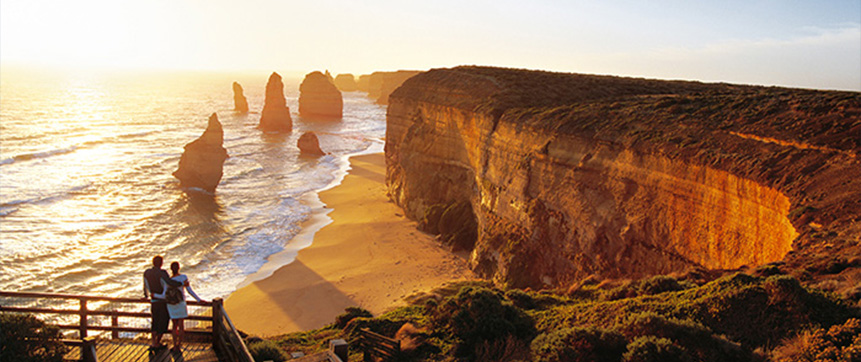
The Australian tourism industry is gradually recovering from the COVID-19 pandemic that brought global travel to an unprecedented standstill. International tourism fell sharply in early 2020 and has only slowly recovered since restrictions were lifted in the first half of this year. By contrast, domestic tourism spending bounced back quickly as local restrictions eased and is now above pre-pandemic levels. This article outlines the recovery in the Australian tourism industry following the pandemic, the challenges the industry has faced in reopening, and the uncertainties around the outlook for the tourism industry over the next few years.
Introduction
Restrictions to contain the spread of COVID-19 and precautionary behaviour by consumers significantly disrupted the movement of people both domestically and internationally during the pandemic period. This had a devastating impact on many Australian businesses that provided services to domestic or international tourists. Nevertheless, many of these businesses have shown considerable resilience and flexibility, aided by a range of government support packages, and are now expanding to service the recovery.
This article presents a snapshot of the tourism industry through the pandemic, before focusing on the recovery over the past year. While international tourism is recovering only slowly, domestic tourism spending has rebounded strongly – to above pre-pandemic levels – as many Australians have chosen to take domestic rather than overseas holidays. The article draws on information from the Bank’s regional and industry liaison program to discuss the challenges the tourism industry has faced in meeting this sudden increase in demand, and the outlook for tourism activity over the next few years. Many tourism businesses have found it difficult to quickly scale up to meet demand, and these supply constraints have limited tourism activity and led to higher prices. Looking ahead, a continued recovery in tourism activity is expected as supply-side issues are gradually resolved and international tourism picks up further. However, there are a number of uncertainties around the timing and extent of this recovery.
International tourism
The onset of the COVID-19 pandemic led to a sharp drop in international tourism, as governments around the world implemented travel and border restrictions (Graph 1). In April 2020, international tourism arrivals declined globally by around 90 per cent and Australia’s international tourist arrivals effectively came to a standstill for several months.
The timing and extent of the recovery in international tourism has been uneven across the world, as national governments removed restrictions at a different pace. Globally, international tourism arrivals picked up to be around three-quarters of their pre-pandemic levels by September 2022. In Australia, international tourist arrivals rose slightly in mid-2021 under the temporary operation of the Australia–New Zealand travel bubble, and also in November 2021 as border restrictions eased in some parts of the country. However, it wasn’t until February 2022 – when Australia removed border restrictions for vaccinated persons – that arrivals began to substantially pick up. Since July 2022, people have been able to travel to and from Australia without being required to declare their vaccination status.
Short-term overseas arrivals to Australia (which include tourists but also those visiting for less than 12 months for business, education and employment purposes) picked up to be around half of pre-pandemic levels by September 2022 (Graph 2). However, short-term departures of Australian residents have picked up more quickly than short-term arrivals of overseas visitors, and so the net outflow of travellers has been larger than pre-pandemic levels in recent months.
Reasons for travel
The recovery in short-term travel to and from Australia has been particularly pronounced among those visiting friends and relatives (VFR) (Graph 3). VFR accounted for just over half of all international visitors’ spending over the year to June 2022, whereas it accounted for just under one-fifth in 2019 (Table 1). Short-term travel for business and education purposes has also picked up. However, the recovery in outbound business travel (including conventions and conferences) has outpaced inbound business travel, with relatively few major business events held in Australia in 2022. Short-term travel for employment reasons has almost fully recovered to its 2019 levels. By contrast, the number of visitors arriving in Australia for holidays has picked up only slightly, to be around one-third of its pre-pandemic level (holiday visitors accounted for only 10 per cent of international visitor spending over the year to June 2022, compared to nearly 40 per cent in 2019).
Working holiday makers and international students who are in Australia for more than a year are not included in the short-term arrivals data, but they make a significant contribution to tourism spending. According to Hall and Godfrey (2019), visitors who state the main purpose of their trip as education stay longer and spend more than leisure and business tourists. International students and individuals on working holiday visas have a high propensity to travel within Australia, and often their friends and relatives come to visit. The number of international students and working holiday visa holders in Australia has risen to be around two-thirds and one-half of their pre-pandemic levels in the September quarter of 2022, respectively.
The recovery in international visitors to Australia has been uneven across source countries, reflecting both travel restrictions and the quicker recovery in VFR relative to other types of travel (Graph 4). The recovery in the number of visitors from India, New Zealand and the United Kingdom has been faster than for other countries, possibly due to the close relationships residents from those countries have with Australian residents (in the 2021 Census, England and India were the top two countries of birth for Australian residents, other than Australia). While there has been a notable pick-up in people from India visiting friends and relatives, there has also been a pronounced recovery in the number of Indian students coming to Australia. By contrast, the number of Chinese visitors remains more than 90 per cent below pre-pandemic levels, due to ongoing travel restrictions to control the spread of COVID-19 in China. This is significant for the Australian tourism sector as, prior to the pandemic, Chinese visitors were the largest source of tourist spending and contributed around 20 per cent of total leisure travel exports in 2019 (or nearly 30 per cent if education-related travel is included).
Domestic tourism
Domestic tourism activity was severely disrupted by the COVID-19 pandemic, due to the introduction of strict restrictions on household mobility (‘lockdowns’) across the country in March 2020 (Graph 5). At the same time, a number of states and territories implemented interstate border restrictions and quarantine arrangements. As a result, domestic tourist visitor numbers declined sharply. By April 2020, domestic tourist numbers were less than 20 per cent of pre-pandemic levels.
The first lockdown ended for most parts of the country by the end of May 2020, although some restrictions on household activity and state border closures remained in place for an extended period of time. Melbourne re-entered lockdown for much of the second half of 2020. By the end of that year, however, a number of states and territories had eased restrictions and reopened domestic borders, allowing domestic visitor numbers to recover to around 80 per cent of pre-pandemic levels over the 2020/21 summer and the 2021 Easter holidays (Graph 6).
A third major disruption emerged in mid-2021, as a sharp rise in the number of Delta-variant cases led to the reintroduction of lockdowns in New South Wales, Victoria and the ACT. Around half of the Australian population were under significant restrictions for most of the September quarter of 2021 and domestic visitor numbers declined to around 40 per cent of pre-pandemic levels.
Domestic tourism numbers rebounded again during the 2021/22 summer holidays as health restrictions eased once more, but not to the levels of the previous year; the Omicron outbreak in early 2022 tempered activity somewhat. As concerns about Omicron abated, domestic visitor numbers again recovered, and have been around 85 per cent of pre-pandemic levels since Easter 2022.
While domestic visitor numbers remain below pre-pandemic levels, total domestic tourism spending and the average spend per visitor have been above pre-pandemic levels since March 2022. Some liaison contacts report that domestic travellers are staying longer than they did before the pandemic and spending patterns have become more like those on overseas holidays, with domestic tourists spending more on tours and experiences to explore Australia. This higher spending also reflects an increase in domestic travel prices (see below).
The recovery in domestic tourism spending in 2022, to around or above pre-pandemic levels, is evident in all states and territories (Graph 7). Naturally, states that experienced longer and stricter COVID-19 restrictions had much more significant declines in tourism activity over 2020 and 2021. Western Australia experienced the least disruption to the tourism industry, partly due to having fewer restrictions on movement, but also because the closed state border meant that more Western Australians were holidaying in their own state. In recent months, the Northern Territory and Queensland have been the recipients of domestic tourism spending well above 2019 levels, perhaps because these travel destinations are regarded as closer substitutes for overseas holidays.
Travel to regional areas recovered more quickly and fully than travel to capital cities (Graph 8). Regional areas were less affected by lockdowns and liaison suggests that travellers preferred to avoid more densely populated areas. There was also a shift towards driving holidays, which has greatly benefited regions within two to three hours’ drive from capital cities.
Challenges in reopening the Australian tourism industry
While pandemic-related declines in domestic and international tourism weighed heavily on the Australian tourism industry, many businesses have proved resilient and have experienced a strong rebound in demand from domestic tourists in recent months. Nevertheless, many businesses have found it difficult to scale up to meet this demand, and supply constraints have acted to limit tourism activity and led to higher prices.
In 2022, the biggest constraint on the recovery in tourism activity has been difficulty finding sufficient labour to service tourism demand. The tourism industry lost a large number of experienced staff during the pandemic – and so when domestic tourism recovered, the sector had to rapidly hire workers in a tight labour market. Online advertisements for tourism jobs rose to record highs by mid-2022 (Graph 9). These jobs have been difficult to fill. Liaison contacts have suggested that many of the Australians who had worked in the tourism industry prior to the pandemic have since found jobs in other industries. Moreover, many tourism-related jobs had previously been filled by international students and, particularly in regional locations, working holiday makers – many of whom left Australia during the pandemic and have been slow to return. On top of the difficulties in attracting and retaining staff, illness-related absenteeism has been elevated more broadly through 2022.
Tourism businesses in many regional areas have had additional difficulties attracting staff, partly due to a shortage of housing. An increase in net migration to these areas has contributed to very low rental vacancy rates in many popular tourist areas. In response, some holiday accommodation providers have resorted to housing their own staff.
There have also been some changes in consumer behaviour resulting from the pandemic that have made it harder for tourism businesses to plan and have sufficient staff available to meet demand. Trends such as increased working from home and a reduction in business-related day trips have created a larger gap between peak and off-peak periods for many tourism businesses. There are also sharper peaks and troughs in demand because there are fewer international tourists, who often travel at different times to domestic travellers (e.g. filling accommodation mid-week and outside school holidays). Booking lead times substantially shortened during the pandemic, though there is some evidence that perhaps these are lengthening out again. Nevertheless, booking lead times have always been shorter for domestic travel than international travel, so the change in the composition of travellers has made it more difficult for tourism businesses to plan ahead.
While labour has been a constraint across most of the tourism industry, a lack of capital equipment has been an additional constraint for some businesses. Many tourism-related businesses sold off or retired vehicles, boats, aircraft and other equipment during the pandemic when they could not operate and were in need of cash (Grozinger and Parsons 2020). The sudden and stronger-than-anticipated recovery in domestic tourism in 2022, combined with supply chain issues delaying the manufacture and delivery of new equipment and vehicles, has meant that many businesses did not have the capital equipment they need to service the increase in demand.
These supply-side constraints (in both labour and capital) have limited the tourism industry’s ability to ramp up to meet demand. Liaison suggests many tourism operators are operating below their previous capacity – for example, many have had to limit their operating hours because of lack of staff, and some accommodation providers have not been able to offer all their rooms for booking as they do not have enough staff to service them. Labour shortages and supply chain delays have also weighed on aviation capacity and contributed to a decline in domestic airlines ‘on-time performance’ over 2022 (Graph 10).
Similar constraints are also weighing on the recovery in international tourism. Contacts suggest that the recovery has been held back by limited flight availability, the higher cost of travel insurance and, in many cases, the higher cost of flights. Liaison contacts have indicated that delays in visa issuance in 2022 have also been a barrier for those seeking to travel to Australia. Over the past few months, however, visa processing times have shortened somewhat, and visa processing for applicants located overseas – including applicants for visitor, student and temporary skilled visas – have been given higher priority to allow more people to travel to Australia (Department of Home Affairs 2022).
The supply-side constraints in the tourism industry, combined with a strong pick-up in domestic demand and the higher cost of inputs such as fuel, have led to a sharp increase in domestic travel prices (Graph 11). Liaison contacts suggest that consumers have been relatively accepting of price rises for services essential to travel, such as accommodation. However, smaller operators – particularly in highly discretionary services, such as tours – have had less scope to increase their prices, and their margins have been squeezed by the higher costs of inputs such as food, fuel, energy and insurance costs. Prices for overseas travel have also increased significantly in recent quarters, as demand for flights has outstripped capacity, alongside rising jet fuel costs and increases in prices for international tours (ABS 2022).
The outlook
Looking ahead, tourism activity is expected to continue to recover as supply-side issues are slowly resolved and international tourism picks up further. Most liaison contacts suggest a full recovery will not occur until at least mid-2023; many expect it to take a few more years. There are a number of factors that will affect the timing and extent of the ongoing recovery in tourism, including:
- The easing of supply-side constraints : It is unclear how long it may take for some of the supply-side constraints in the industry to ease, including whether planned changes in flight availability will be sufficient to meet changes in demand, and whether the sector will be able to fill more job vacancies over time and as migration returns.
- The return of international students and working holiday visas : Many people have recently had working holiday visas approved and are expected to arrive over the coming year. Liaison contacts also expect international student numbers to increase over the next few years. The return of working holiday and student visa holders will increase demand for tourism services, and will likely alleviate labour shortages as they take jobs in the sector.
- Australians’ preferences for domestic and international travel : Demand for Australia’s tourism services may decline if Australians’ preference for overseas rather than domestic holidays picks up before international inbound tourism demand increases further. It is possible that cost-of-living pressures, combined with the higher cost of international travel, could lead Australian households to continue to prefer domestic holidays for a time. Nevertheless, many households have significant savings and pent-up demand for international travel after planned trips have been deferred over the past few years.
- The global economic outlook : Global economic conditions and the exchange rate affect decisions about whether to travel the long distance to Australia (as they have in the past) (Dobson and Hooper 2015). Financial concerns and the rising cost of living could make expensive, long-haul travel less attractive.
- The timing and extent of recovery in Chinese tourism : As noted above, China accounted for a large share of tourism spending prior to the pandemic. The outlook for Chinese tourism (and international students from China) remains highly uncertain and will depend on a number of factors, including China’s policies to restrict the spread of COVID-19 , the outlook for the Chinese economy and the travel preferences of Chinese tourists more generally.
Restrictions to contain the spread of COVID-19 and precautionary behaviour significantly disrupted the movement of people both domestically and internationally throughout the pandemic. Since restrictions have eased, international travel has been slow to recover, but domestic tourism spending has rebounded to be above pre-pandemic levels and many tourism service providers are currently operating at capacity. Looking ahead, tourism activity is expected to continue to recover, as supply-side issues are slowly resolved and international tourism picks up further. Australia remains an attractive destination for both domestic and international tourists, and the resilience and flexibility demonstrated by Australian tourism businesses in recent years bode well for the opportunities and challenges that lie ahead.
The authors are from the Regional and Industry Analysis section of Economic Analysis Department. The authors are grateful for the assistance provided by others in the department, in particular Aaron Walker and James Holloway. [*]
ABS (Australian Bureau of Statistics) (2022), ‘Main Contributors to Change’, Consumer Price Index , June.
Department of Home Affairs (2022), ‘Visa processing times’, viewed 14 November 2022. Available at <https://immi.homeaffairs.gov.au/visas/getting-a-visa/visa-processing-times>.
Dobson C and Hooper K (2015), ‘ Insights from the Australian Tourism Industry ’, RBA Bulletin , March, pp 21–31.
Grozinger P and Parsons S (2020), ‘ The COVID-19 Outbreak and Australia’s Education and Tourism Exports ’, RBA Bulletin , December.
Hall R and Godfrey A (2019), ‘Edu-tourism and the Impact of International Students’, International Education Association of Australia, 3 May.
- International edition
- Australia edition
- Europe edition

Australia’s workforce shortage: ‘never a better time to be applying for a job’, experts say
Post-lockdown recovery has workers well placed to cash in on labour shortages by demanding higher wages
- Get our free news app ; get our morning email briefing
W hen Jan McKenzie first heard Guardian Australia journalists had arrived without notice at her Cafe Sydney restaurant on a frantic Friday afternoon, her first question in jest was, “can they wait tables this weekend?”
Just three days after reopening from almost four months of lockdown, McKenzie has been run ragged trying to lure back staff to meet the burst of bookings for her elegant eatery overlooking Circular Quay.
During pre-pandemic times, Cafe Sydney operated with 148 staff. Now the business – along with so many in the sector in this city and elsewhere in Australia – is battling to fill rosters, and so far has only secured 130 crew.
“We’ve recruited 60 starters,” McKenzie says. “Out of our [previous workforce], there’s a few people who’ve just gone ‘I’m not doing hospitality any more because of this unpredictability and inconsistency.’”
As New South Wales and now Victoria emerge from their seemingly endless economic hibernation, labour shortages are surfacing across a range of industries.

As other Australian states edge towards opening up, those supply gaps are likely to worsen as government-fuelled demand is unleashed, but without matching efforts to ensure the appropriately skilled workers are on hand to cater for it.
“There’s never been a better time to be applying for a job,” says Dylan Broomfield, manager of policy and advocacy at the Victorian Chamber of Commerce and Industry.
He cites hospitality businesses in Melbourne offering $1,000 bonuses to staff to sign up – Sydney is reportedly offering more than twice that at some restaurants – evidence of the “crazy” scramble to find workers as leisure activity comes out of its slumber.
In regional Victoria, where the unemployment rate is 3.2%, “there’s a huge struggle” to land and keep skilled staff. “They’re paying twice what they used to have to for chefs,” Broomfield says.

The urge to eat out with friends is perhaps only topped by the desire to travel after months of restrictions. With overseas flights only now ramping up and concern over restrictions on return likely to linger, domestic holidays can be expected to remain popular – even if receiving businesses may struggle to cope.
The industry is “just in excess of 300,000 people down on what we were prior to the pandemic,” Michael Johnson, chief executive of Tourism Accommodation Australia, says of staffing levels. That tally includes about 100,000 people on working holiday visas and about double that for international students, who help pay for their study by working in bars, restaurants, and many other tourism outlets.
“There’s probably no better time to come into our industry as we work through our recovery stage,” Johnson says.
Major cities, too, may face big challenges as large hotels gear up for an influx of visitors from home and abroad as border barriers fall away.
Philippe Kronberg, general manager of Shangri-La Sydney, is well aware of the need to be flexible in uncertain times. His hotel, which was not on the quarantine accommodation list, saw occupancy of its 565 rooms plummet to just 1-2% during the recent lockdown, with few staff on hand.
“There were a few instances when I had to make beds,” says the smartly tailored Kronberg, as we chat in a glass room offering sweeping views of the harbour for well-heeled diners.

Government programs , jobkeeper and later jobseeker, “were a huge help” in retaining staff, and the hotel “did not go for redundancies like other companies”, he says.
Even so, about 35-40% of his hotel staff had previously been drawn from those on official backpacker or transient visas. That supply has mostly gone.
“Because as demand is increasing [with occupancy rates nearing 50% on weekends], the supply of skilled workers is really critical for us in areas such as housekeeping,” Kronberg says.
Kronberg also says workers are well-placed to haggle for higher pay. “At the moment, it’s definitely the staff [who are] really in a position to actually get what works for them.”
That shift in wage-bargaining clout has echoes elsewhere in the economy. Western Australia’s tight restrictions on labour movement across state borders has already resulted in well-flagged shortages of truck drivers and other mine workers.
Tim Nieuwenhuis, managing director of Workfast, a labour hire firm serving major projects, says “the mining industry is sucking a lot of workers and pay rates have gone up 50% at least”.
“Instead of an electrician earning, you know, $100,000 a year, they can earn $130,000 base and they can get up to $190- or $200,000 a year if they do overtime,” he says.
Of course, not every industry is thriving. Warehouses, for instance, are well down on staff as international supply chain issues mean some stock isn’t arriving. And the NSW government, for instance, predicts that even with a $2.8b recovery package announced this week, it will take a year to restore the 235,000 jobs lost in that state alone during the recent lockdowns.
However, the economic pump-priming already in the works means shortages in some areas will probably get worse. “There’s going to be more of a shortage because most of the major projects haven’t even started yet,” Nieuwenhuis says.
“So I think next year we’ll end up with a crunch, a shortage of skilled workers,” he says. But Nieuwenhuis describes it as a “win win for everyone”.
“They don’t have competition from overseas workers coming in. Australian workers, you know, get more work, and they get up-skilled and they get paid more money.”
Early hints of whether companies are passing on the higher wages and other costs could be seen as early as this week, with the Australian Bureau of Statistics (ABS) to release September consumer and producer price indices on Wednesday and Friday.
Officially, the latest unemployment rate stood at 4.6% in September, according to the ABS . Market economists put the true figure at closer to 10% given how many people have lately stopped looking for work.
Bjorn Jarvis, an ABS labour economist, says last year’s recovery from the first Covid wave provides confidence that the economy can rebound strongly again.
“Throughout the pandemic, our statistics have shown how quickly the labour market recovers from lockdowns and restrictions, as people get back to work and start working more hours,” Jarvis says.
“Before the recent series of Delta [strain] lockdowns, back in May of this year, employment and hours were higher than the start of the pandemic, and the participation rate was back around an all-time record high,” he says. “At the same time, we also saw historically high level of job vacancies and a higher number of employers reporting difficulties in filling vacancies.”
“If the labour market gets back to where it was in May we’ll likely be talking again about a tight labour market,” Jarvis adds. “That’s generally good news for people looking for work or better conditions, but may mean we continue to see employers struggling to fill jobs.”
Job swapping, though, goes against the trend towards lower work mobility over recent decades. Jarvis says that shift has been puzzling labour economists for some time.
In the year to February 2021, just 975,000 or 7.5% of employed people changed jobs, the lowest annual job mobility rate on record.
That trend is not a friend for farmers like Dion Woolford, a third-generation grazier and grain grower near Kimba on South Australia’s Eyre Peninsula.
Managing breeding merino rams and 2000 ewes, along with barley and wheat crops across 9000 sprawling hectares, demands a range of skills that make farmers picky. “Probably our attitude is: no one is better than the wrong one,” he says.
“We can’t get skilled labour easily, or at all, for the whole year,” Woolford adds.
While the media often highlights calls from politicians and business groups to offer more short-term work visas for fruit-pickers and other labour-intensive horticultural workers, that approach doesn’t offer much for broadscale farmers.

“From the outside looking in, farming is simple but you’ve got million-dollar machines driving around in the paddock,” says Woolford, who is also on the board of Grain Producers SA, an industry group. “It takes training and it takes trust to get people up to scratch to operate them.”
Issuing more visas is “is a short term fix I think the governments look to, but it’s probably not what we’re after,” he says.
Instead, farming and other industries need a “bottom-up approach … to hasten slowly” to develop more patient, lasting programs, Woolford says.
“The training processes is a long, slow burn.”
- Australia news
- New South Wales
- Hospitality industry
- Agriculture
Most viewed
Accommodation
Government & Politics
Infrastructure
Environment
Research & Reports
Asia Pacific
North America
South America
Middle East & Africa

Franz Josef fears: more tourism layoffs, asset sales – report
22nd January 2021 By Staff Reporter | [email protected] | @tourismticker
Sorry, you do not have authorisation to view this page!
If you would like to view the content on this page you will need to be a Tourism Ticker member. Click here for our subscription packages.
As a tourism specific news site we work hard to bring you breaking and original content for the industry.
We value your support to make this happen!
Related Articles

23 Apr 2024 Business obligations for Anzac Day

11 Apr 2024 Perspectives: NZ tourism and hospitality must address staff retention

11 Apr 2024 DOC cutting jobs from visitors group, overall department reductions total 130
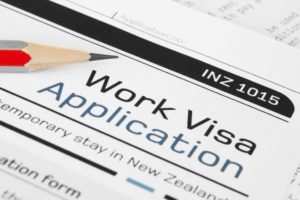
8 Apr 2024 New English language, work & skills requirements for AEWV

4 Apr 2024 Accom, food services filled jobs up 2.8%

26 Mar 2024 Accom, food services among top providers of part-time, flexible work
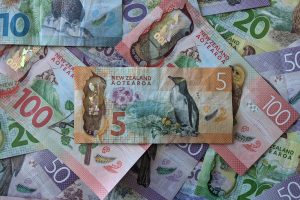
2 Feb 2024 Minimum wage increase slated for April
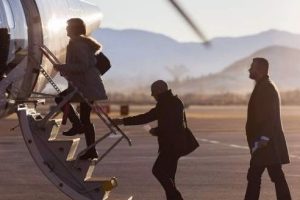
31 Jan 2024 Air NZ enables $15bn in tourism spend, supports 101k jobs – report

30 Apr 2024 Focus
Focus: we need to fix the unregulated short-term rental accommodation market…, …so, what could a new zealand solution look like, 30 apr 2024 biea / pīata mai, beia releases first nz strategy for business events industry, 30 apr 2024 roundup, tuesday 30 april, 29 apr 2024 aov / te aka treehouse, an operator’s view: building in the branches with te aka treehouse, 29 apr 2024 airbnb / rotoruanz, rotoruanz ceo: short-term accom rate hike about fairness, supporting tourism.
Home Roundup People Events Campaigns Transport Activities
Accommodation Government & Politics Infrastructure Māori Environment Technology
Data Research & Reports Features Resources Companies Jobs Market Calendar
China Australia Asia Pacific North America South America Europe Middle East & Africa
About Contact Newsletters
Advertise Sponsor Subscribe
NZ Media Council Privacy Policy Terms & Conditions
© 2024 Business Media Network Ltd Website by Webstudio

- Minister for Trade and Tourism
- Special Minister of State
Senator the Hon Don Farrell
- Media Releases
- Transcripts
Australian tourism continues to recover
- Media release
International visitors are expected to return to Australia more quickly than previously predicted, according to Tourism Research Australia's latest forecasts.
The Tourism forecasts for Australia: 2023 to 2028 report published today outlines a stronger growth for international arrivals than last year's forecasts.
This reflects the return of Chinese visitors to Australia since China's borders reopened in January, and following the restart of group tour travel from China to Australia in September.
Sustained high growth in international arrivals to Australia so far this year, the continued return of flight routes and commencement of new routes to Australia also underpin the encouraging projections.
Australia is predicted to welcome:
- 7.3 million international visitors in 2023, almost twice as many as last year (3.7 million)
- 9.3 million in 2024, reaching 98 per cent of pre-pandemic levels;
- 10.2 million in 2025, surpassing pre-pandemic levels to set a new record;
- And 12.1 million in 2028, an increase of 4.8 million or 65 per cent on this year.
The report also forecasts record spending across Australia's tourism and travel industry, which delivers benefits for accommodation, hospitality, transport, experience and event providers, and retail.
Excluding students who stay in Australia for more than 12 months, both domestic and international travellers are predicted to spend $170.3 billion in 2023, 23 per cent ($31.9 billion) above pre-pandemic (2019) levels.
International visitors alone are projected to spend $28.6 billion in Australia this year, a 124 per cent increase on 2022. This means every international tourist we welcome is spending almost $4,000 on average in our communities.
The report also points to significant increases in expected visitors from a number of countries in Southeast Asia, as well as continued strong growth in travel from China.
Deepening Australia's economic engagement with Southeast Asia is a key priority for the Government, and the Southeast Asia Economic Strategy to 2040 charts a pathway to further grow inbound tourism in our region.
While domestic travel stabilised in 2023, after a rapid bounce back in 2022 from the pandemic, the report forecasts that by 2028, domestic visitor spend will reach $172.6 billion, some 61 per cent higher than the pre-pandemic level.
Quotes attributable to the Minister for Tourism, Don Farrell:
"Australia is the best place to live, work and visit, and thanks to our resilient, world-class tourism operators, international and domestic travel has bounced back. "A thriving tourism industry is crucial to our economic prosperity, with every dollar spent in the visitor economy generating a further 81 cents for other parts of the economy. "Tourism is a major export earner and employer. One in eight Australian businesses is tourism-related and it is the lifeblood of so many Australian communities. "That's why the Albanese Government continues to back in our hard-working industry, including through Tourism Australia's $125 million Come and Say G'day campaign and our additional $48 million package of support for Australian tourism and travel businesses. "It's great to see the rapid increase in international visitors to Australia this year, who are coming back in droves to come and say G'day."
Media enquiries
- Minister's office: 02 6277 7420
- DFAT Media Liaison: (02) 6261 1555
Visitor Economy Facts and Figures
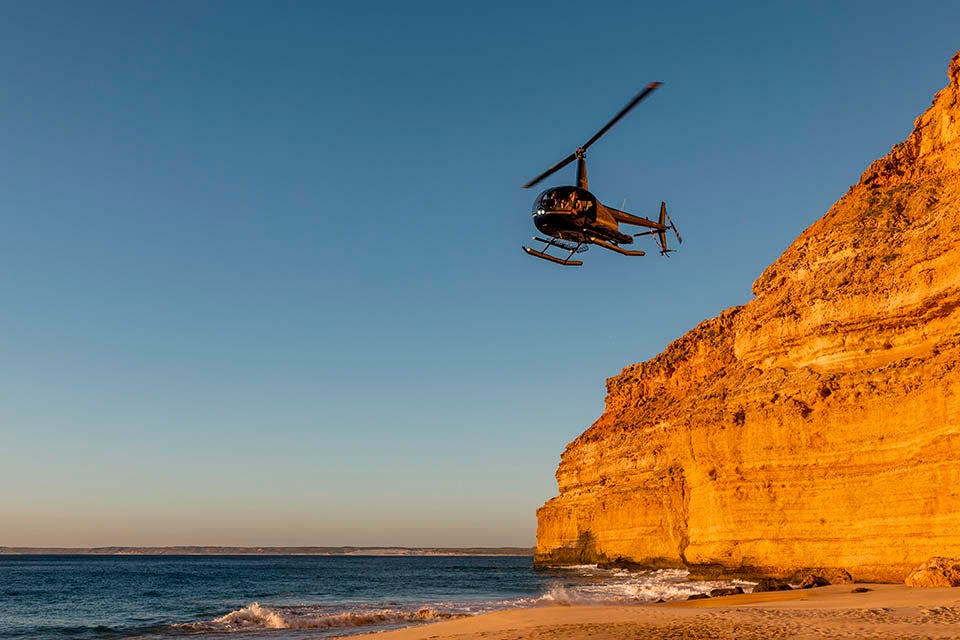
Main content
The Visitor Economy Facts and Figures (VEFF) is a monthly report which brings together data relevant to the visitor economy from a range of different sources. The report provides a quick and easy reference for the major factors affecting Australia’s visitor economy.
Open the Visitor Economy Facts and Figures data in full-screen mode .
Data results
The main data in this report are:
- monthly, quarterly and annual data on the number of domestic and international visitors. It also captures their reasons for travel and their total spend in Australia
- total value of the visitor economy by its components
- trends and source countries of international visitors and students
- supply metrics such as tourism jobs and aviation data.
Data sources
Data is sourced from:
- Tourism Research Australia (Austrade)
- Australian Bureau of Statistics (ABS)
- Department of Education
- Bureau of Infrastructure and Transport Research Economics (BITRE)
- Department of Home Affairs.
Please note:
- The VEFF data is updated on the same day that Tourism Research Australia’s monthly National Visitor Survey and International Visitor Survey are released
- View this page on a desktop device for the best result
Contact TRA
mail tourism.research@tra.gov.au
Footer content

Our Organisation

Our Careers

Tourism Statistics

Industry Resources

Media Resources

Travel Trade Hub

News Stories

Newsletters

Industry Events

Business Events

Tourism statistics
- Share Share on Facebook Share on Twitter Share on WhatsApp Copy Link
Explore the research that Tourism Australia provides to consumers and industry.
- International statistics
- Domestic statistics

International performance

Aviation data

International tourism snapshot
International travel sentiment tracker

Domestic performance
Domestic travel sentiment tracker

Subscribe to our Industry newsletter
Discover more.

We use cookies on this site to enhance your user experience. Find out more .
By clicking any link on this page you are giving your consent for us to set cookies.
Acknowledgement of Country

We acknowledge the Traditional Aboriginal and Torres Strait Islander Owners of the land, sea and waters of the Australian continent, and recognise their custodianship of culture and Country for over 60,000 years.
*Disclaimer: The information on this website is presented in good faith and on the basis that Tourism Australia, nor their agents or employees, are liable (whether by reason of error, omission, negligence, lack of care or otherwise) to any person for any damage or loss whatsoever which has occurred or may occur in relation to that person taking or not taking (as the case may be) action in respect of any statement, information or advice given in this website. Tourism Australia wishes to advise people of Aboriginal and Torres Strait Islander descent that this website may contain images of persons now deceased.

Redundancies made across Deloitte offices

Accounting firm Deloitte Australia has made a “small number of redundancies” across its national practice in response to challenging market and economic conditions.

Accounting firm Deloitte Australia has made a “small number of redundancies” across its national practice in response to challenging market and economic conditions.
The ‘big four’ firm recently made an undisclosed number of redundancies, including cuts to its Perth teams, from specific areas across its national offices.
A Deloitte spokesperson told Business News the redundancies were concentrated in areas where there had been significant structural shifts in client need and demand.
According to Data & Insights , Deloitte is ranked as Western Australia’s largest accounting firm by number of staff (1,139) in the state.
It has nine offices around the country and a workforce of nearly 14,000 in Australia.
“We regularly review our hiring priorities, talent skills, and workforce composition in line with market needs,” a Deloitte spokesperson told Business News .
“The current market and economic conditions are challenging, and we are seeing some meaningful changes in how our clients are buying some of our services.
“As a result, we have recently made a small number of redundancies concentrated in areas across our national practice where we have seen significant structural shifts in client need and demand.”
It comes after Deloitte ’s US branch reportedly cut 1,200 jobs, or about 1.4 per cent of that workforce, due to slowed demand from its consulting business.
Earlier this month PwC announced more than 300 redundancies and the accelerated retirement of partners, with its national headcount to be cut by about 5 per cent.
It also follows redundancies at fellow big four accounting firms EY and KPMG last year.
EY cut more than 200 employees nationally in November, including five roles from its Perth office, and KPMG cut about 300 staff throughout 2023.
Related Data & Insights
Accountants, consulting firms, corporate finance.

Data & Insights
Related articles.
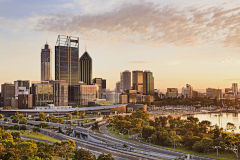
Appointments March 15, 2024
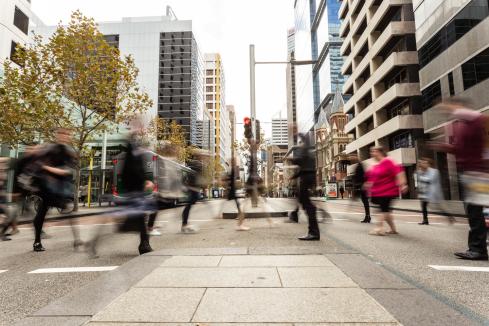
Australia’s GDP growth slow but steady: ABS
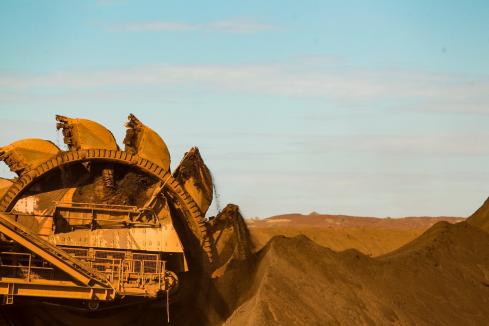
Gender pay gap wrap: mining, accounting, education
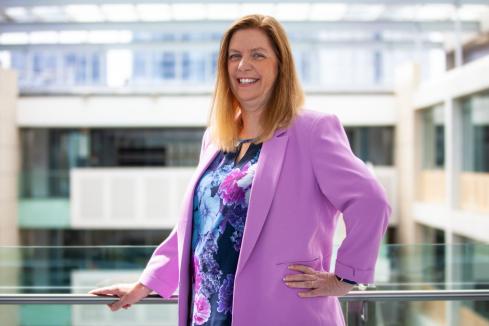
Inflation rate slows to 4.1pc
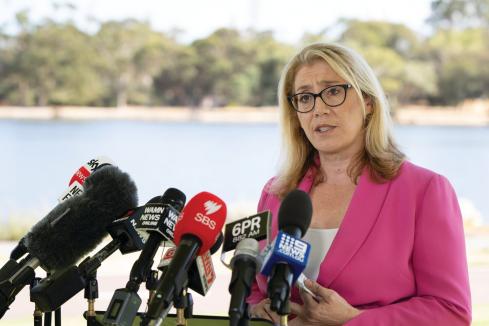
WA Labor leads donation race
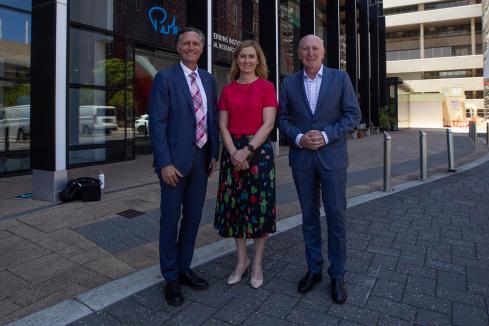
Med research’s $2.1bn potential for WA economy
Subscribe today for award-winning, unbiased and trusted journalism.

IMAGES
VIDEO
COMMENTS
Tourism Australia confirmed 20 roles were being made redundant, amounting to about 10 per cent of its workforce. The roles in the firing line are in the agency's Sydney-based marketing team and ...
Adding, "structural changes were being made to our Sydney operations which do involve some redundancies". Tourism Australia's latest campaign, a $120 million video titled, "Come and say G ...
tourism workforce; vacancies in tourism-related occupations; recruitment activity; and availability of international labour sources. The tourism workforce At the end of 2019 there were 757,500 tourism filled jobs in Australia. The COVID-19 pandemic reduced this number to just 363,900 jobs in mid- 2020, a decline of 52% or 393,600 jobs in 6 months.
The department cited Tourism Research Australia that nine million international visitors came to Australia in 2019, spending a total of $45bn, "significantly less" than the $65bn spent by ...
After much anticipation, the federal government has finally released the details of its new $1.2 billion support package for Australia's tourism industry.
The report finds that: the visitor economy workforce has been recovering from the impact of COVID-19. the recovery has taken time. workforce shortages were acute and widespread in the visitor economy in 2022. there are signs that the severity of workforce shortages has eased in 2023. skills shortages remain elevated relative to the pre-pandemic ...
Tourism (Australia) This article is more ... "With jobkeeper winding up on 28 March, we are still very concerned at redundancies in our businesses which have been left out of this new plan." ...
Table 1.1: Tourism Australia resource statement — Budget estimates for 2021-22 as at Budget May 2021. 2020-21 Estimated actual $'000. Opening balance/cash reserves at 1 July (a) -. Funds from Government. Annual appropriations - ordinary annual services (a) Outcome 1 139,445 Total annual appropriations 139,445.
Tourism jobs still impacted. Tourism filled jobs increased 5.1 per cent in December quarter 2020, according to figures released today by the Australian Bureau of Statistics (ABS). Jonathon Khoo, ABS head of Tourism Statistics, said: "We have seen 58,000 tourism jobs added in Australia since the low in June 2020.".
The recovery in domestic tourism spending in 2022, to around or above pre-pandemic levels, is evident in all states and territories (Graph 7). Naturally, states that experienced longer and stricter COVID-19 restrictions had much more significant declines in tourism activity over 2020 and 2021.
The Australian Government released THRIVE 2030 to rebuild and return the visitor economy. The strategy sets a target of returning visitor expenditure to pre-COVID levels of $166 billion by 2024 and growing it to $230 billion by 2030, and it includes actions for governments and industry under three key themes: Collaborate. Modernise. Diversify.
The industry is "just in excess of 300,000 people down on what we were prior to the pandemic," Michael Johnson, chief executive of Tourism Accommodation Australia, says of staffing levels.
With three weeks to go before JobKeeper is due to expire, Australian Tourism Industry Council executive director Simon Westaway said businesses are already planning mass redundancies because of ...
Reimagining the Visitor Economy. Reimagining the Visitor Economy is a whole-of-government and industry long-term strategy to chart a course for the long-term growth of Australia's visitor economy after the impacts of COVID-19. Learn More. Download PDF versions of Tourism Australia's corporate reports.
In the next 5 years, we predict both international and domestic tourism will continue to grow. We expect: international travel to Australia will exceed its pre-pandemic level in 2025. international spend in Australia will exceed its pre-pandemic level in 2024. domestic travel will stabilise in 2023, after strong growth in 2022.
Franz Josef fears: more tourism layoffs, asset sales - report. 22nd January 2021 By Staff Reporter | [email protected] | @tourismticker. Franz Josef in busier days - 2017. Image: Krzysztof Golik. The West Coast could suffer a second round of tourism redundancies and the potential offloading of businesses if the border remains closed, according to a regional employment report.
16 December 2022. Australia's visitor economy is forecast to bounce back to pre-pandemic expenditure this year, and grow to $227.7 billion by 2027, according to new forecasts out today. In very welcome news for the sector, this year's annual Tourism Forecasts for Australia project a brighter future for the visitor economy from now until 2027.
Tourism Australia produces a range of industry, media and special interest newsletters. Keep up to date and subscribe to the newsletters you would like to receive via email. Subscribe now Acknowledgement of Country. We acknowledge the Traditional Aboriginal and Torres Strait Islander Owners of the land, sea and waters of the Australian ...
Oct 19, 2023 - 10.00am. A. lmost 23,000 Australians are estimated to have been laid off in reported redundancy rounds this year, as companies respond to rising interest rates and stubbornly high ...
While domestic travel stabilised in 2023, after a rapid bounce back in 2022 from the pandemic, the report forecasts that by 2028, domestic visitor spend will reach $172.6 billion, some 61 per cent higher than the pre-pandemic level. Quotes attributable to the Minister for Tourism, Don Farrell: "Australia is the best place to live, work and ...
The Visitor Economy Facts and Figures (VEFF) is a monthly report which brings together data relevant to the visitor economy from a range of different sources. The report provides a quick and easy reference for the major factors affecting Australia's visitor economy. Open the Visitor Economy Facts and Figures data in full-screen mode.
The economic importance of tourism. Understanding Tourism Statistics. Markets. Explore tourism statistics, including International Visitor Arrivals and International Visitor Spend and links to State and Territory organisations. Learn more today.
Redundancies made across Deloitte offices. By Isabel Vieira. Accounting firm Deloitte Australia has made a "small number of redundancies" across its national practice in response to challenging market and economic conditions.